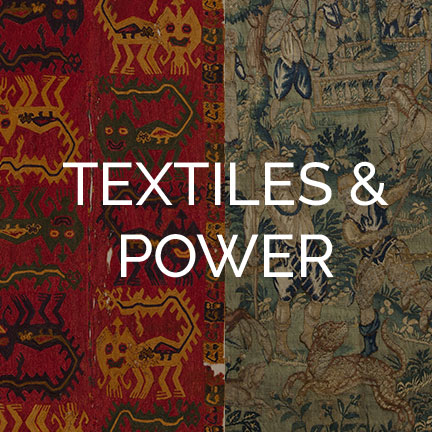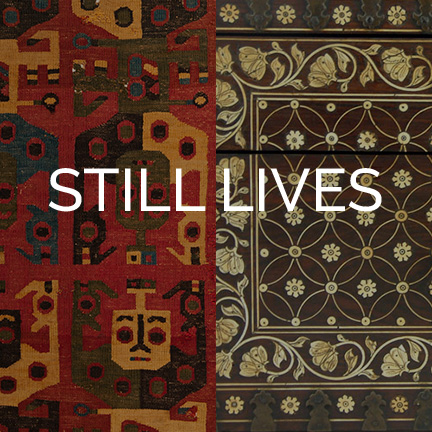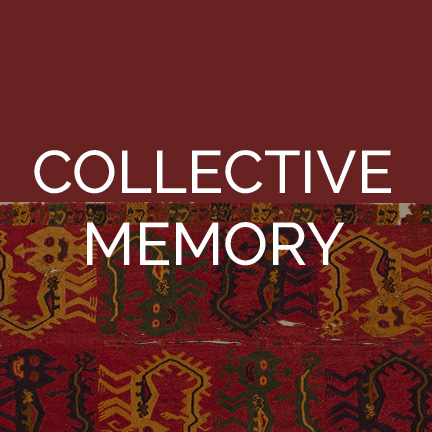FRAGMENTS
REWEAVING INTERPRETATIONS OF SOUTH AMERICAN TEXTILES
ABOUT THIS EXHIBITION
Nearly two thousand years ago in the Andes Mountains, a Paracas artist wove a small, vibrant garment embellished with images of angular cats. Some miles away and a few hundred years later, a Tiwanaku artist living near Lake Titicaca crafted a visually similar piece: a bright red cloth with a pattern of humanoid masks. Wrapped around human remains and secreted in burials, the textiles– never intended to be seen again by the living–came together at the Mead Art Museum in 1933.
Most extant ancient South American textiles share complex histories that include collecting and colonialism in their most recent chapters. This exhibition offers new narratives for these two textile fragments, which are most often interpreted as artifacts that represent a cultural moment or influence contemporary Peruvian fiber arts. European and Euro-american colonial collections emphasized craftsmanship and cultural significance over form and visual provocations. This continued even as twentieth century European modern artists appropriated geometric imagery from indigenous American, African, and Asian aesthetics. Today, scholars acknowledge the significance of textiles as artworks, although they were long dismissed as “craft” or the “decorative arts” in Western art history.
In this exhibition, we reframe these two textile fragments by comparing them with other objects from the Mead’s collection. Four thematic essays invite visitors to explore how different curatorial agendas alter the way in which an object is interpreted. By weaving these narratives together, the exhibition opens up new meanings for these textiles that are fragmented in form and history.




